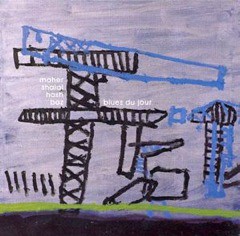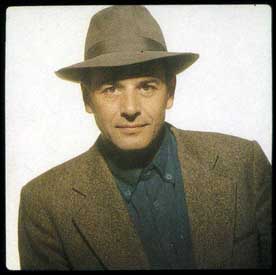William Basinski - The Disintegration Loops buy it here
buy it here"It's impossible: no one could create a script this contrived. Yet, apparently, it happened. William Basinski's four-disk epic, The Disintegration Loops, was created out of tape loops Basinski made back in the early 1980s. These loops held some personal significance to Basinski, a significance he only touches on in the liner notes and we can only guess at. Originally, he just wanted to transfer the loops from analog reel-to-reel tape to digital hard disk. However, once he started the transfer, he discovered something: the tapes were old and they were disintegrating as they played and as he recorded. As he notes in the liner notes, "The music was dying." But he kept recording, documenting the death of these loops.
These recordings were made in August and September of 2001. Now, this is where the story gets impossible. William Basinski lives in Brooklyn, less than a nautical mile from the World Trade Centers. On September 11, 2001, as he was completing The Disintegration Loops, he watched these towers disintegrate. He and his friends went on the roof of his building and played the Loops over and over, all day long, watching the slow death of one New York and the slow rise of another, all the while listening to the death of one music and the creation of another. As I said, it's impossible. The music, however, is beautiful, subtle, sad, frightening, confusing, and ultimately uplifting. What's he created here is a living document: a field recording of orchestrated decay. It sounds like nothing else I've heard, yet, at its core, it's the simplest and most familiar music I can imagine.
The four disks comprise six unique works. There is some overlap on the different disks; in fact, the first work (which Basinski calls "D|P 1") begins on disk one and ends on disk four. Some of the works are very long ("D|P 1" is over 90 minutes), while some are relatively short ("D|P 4" is only 20 minutes). However, each of the six works employs a different, repeating loop that slowly deteriorates into oblivion. The loops are very simple: a lush string or synth melody backed by atmospheric arpeggio countermelodies. The melodies are, as Basinski notes, pastoral: lush, simple works intended as idealized representations of nature and beauty. In theory, then, this is ambient music: music designed to set a mood, evoke a feeling (like a cinematic score), but one that is not designed for deep listening. That, I'm sure, was Basinski's initial design when he first created these loops in 1982.
But time has slowly killed these loops and the pastoral (and ambient) ideals they once represented. What we hear on The Disintegration Loops are not poetic images of nature or beauty but nature and beauty as they truly exist in this world: always fleeting, slowly dying. What makes these works so memorable is not the fact that the loops are slowly disintegrating but the fact that we get to hear their deaths. In a very real way, we experience the muddled, ugly, brutal realities of life. What's more, these muddled, ugly, brutal realities of life are, in their own way, incredibly beautiful, perhaps more beautiful than the original, pristine loops ever could have been.
As with any natural occurrence, these individual loops all die very individual deaths. "D|P 3," for example, begins as a bright, bold, orchestral melody that, over the course of 42 minutes, is slowly reduced to a sputtering, churning blob of its former self. The melody disintegrates slowly, until, by the end, only portions are audible; the rest is silence and noise. By contrast, the longest piece, "D|P 1," because it is split into three distinct parts ("1.1" on disk one; "1.2" and "1.3" on disk four), actually dies three separate deaths. Each one begins as soft, warm halos of sound, which then slowly mutates into muddled fragments. And then there's "D|P 4," the smallest work. It begins as a full-fledged melody but slowly devolves into chaos: silences slowly spreading across huge gaps in the loop, while the muddled melody struggles on, barely perceptible, until it, too, is silenced into oblivion.
This is not ambient music; this is not one melody played over and over to fill the background space of a Japanese restaurant. This is natural music: music created from the elemental forces of life and as a testament to those forces. This is the sound of entropy, the sound of life as it decays and dies before our ears. And like all living things, these sounds struggle and claw for life with their last, dying breaths. Their deaths are a memorial to Basinski's past. That he dedicates these works to the victims of the 9/11 terrorist attacks is fitting. I can think of no better tribute, no better response to a tragedy of that magnitude than a work as beautiful and as fragile as this one."
sounds like: time passing




